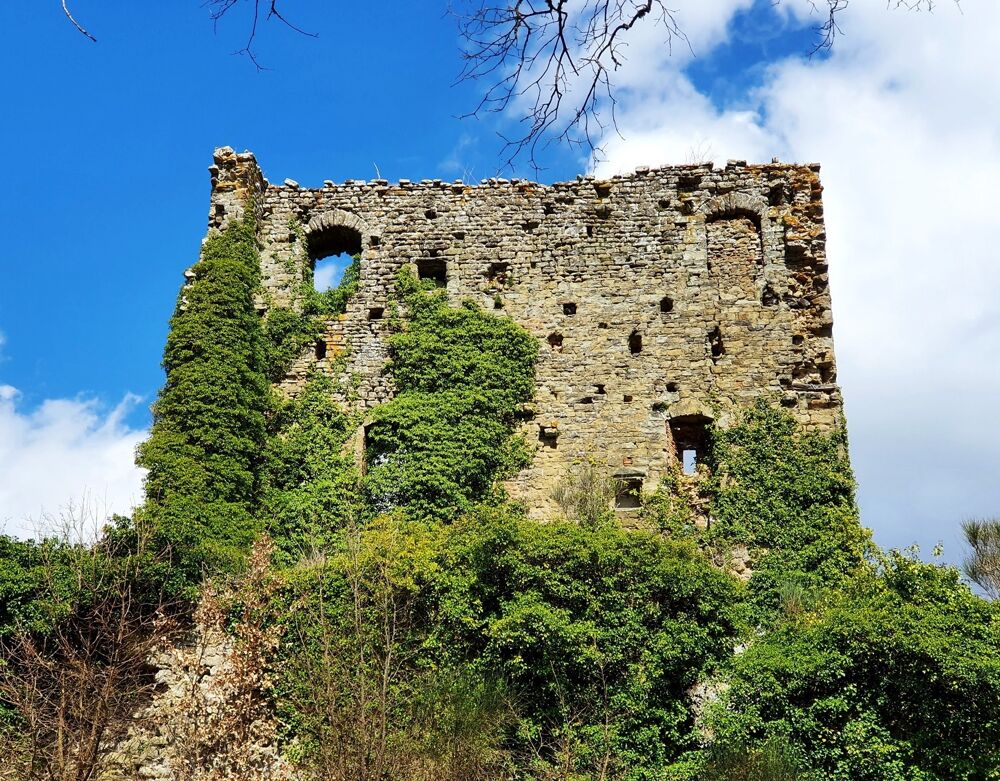











How to reach
The imposing ruins of Ranco Castle can be find in the private property of the farm holidays called 'Rancaccio'. It can be reached, from Arezzo, following the SS73 until the locality named Molino Nuovo, from here continue on the old tracing, avoiding the new one with 4 lanes. 1 km next we find on the right the tourist road sign for the Pieve di Ranco/Pieve a Ranco. The narrow road, that underpass the above said new SS73, leads us beyond the Cerfone stream until the Pieve where you can leave the car. Take the path in the wood on your left and after about another km. you will reach the castle.
History
The castle of Ranco, now reduced in imposing and picturesque ruins, crowns a rocky spur overlooking the valley of the Cerfone stream, in the high Val Tiberina. The construction of the castle in its current shape dates back between the 12th and 13th centuries, however previous fortified settlements seem to go back at least to 6th and 7th centuries, when Bizantini and Longobardi disputed each other for the control of this area. Ranco has always been on the border of the territory of the city-state of Arezzo.
Mighty symbol of the feudal power in the Aretine countryside, the castle was stronghold of many powerful families, like the Tarlati di Pietramala, until 1439. Then it was yielded to Baldaccio d'Anghiari, famous commander, and later on sold to the Brandaglia, noble family from Arezzo. The ancient power of Ranco is testified by its presence in the map of the Val di Chiana designed, in the 1502, by Leonardo da Vinci and in a fresco representing the map of Tuscany painted on the walls of a Vatican gallery.
Despite the current strongly ruined condition is still easy to understand the castle's building topics. The fortification was formed by a great square keep, the residence of the lord, sided by an other just a little smaller square tower. All the keep's northern front remains almost complete, with some beautiful windows still visible, while the eastern and the western sides have collapsed and very little remains of the southern one. Here rose the other tower, now reduced for great part to the foundations. The two towers are encircled by a high and thick walled curtain of irregular shape that follow the ground's morphology. Of this enceinte remain a wide part on the southern and eastern front, where we can admire also a primitive scarped walls. The only gate of access, now disappeared, was opened on the northern front, on this side the curtain enclose the outer ward. All the complex is invaded by the vegetation and to at risk of further collapse.
More info & notes
Photos by Marco Botti